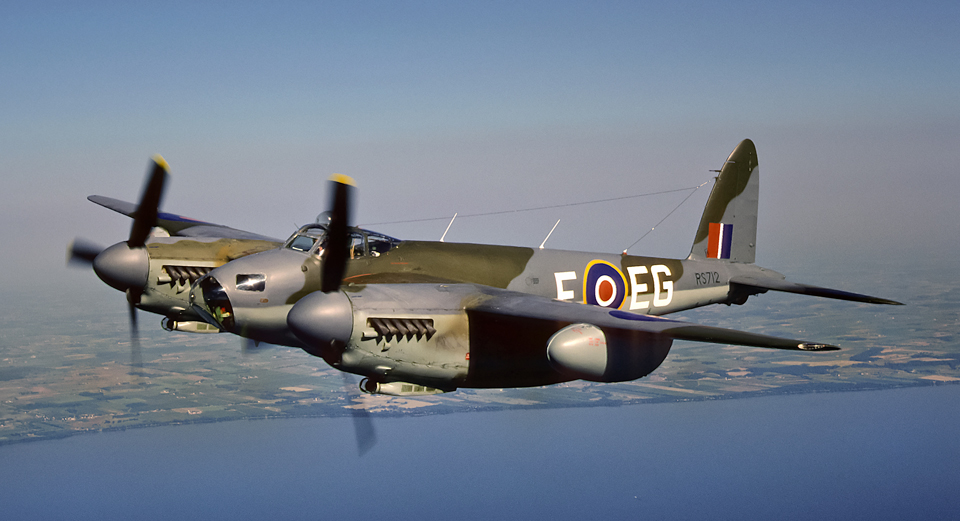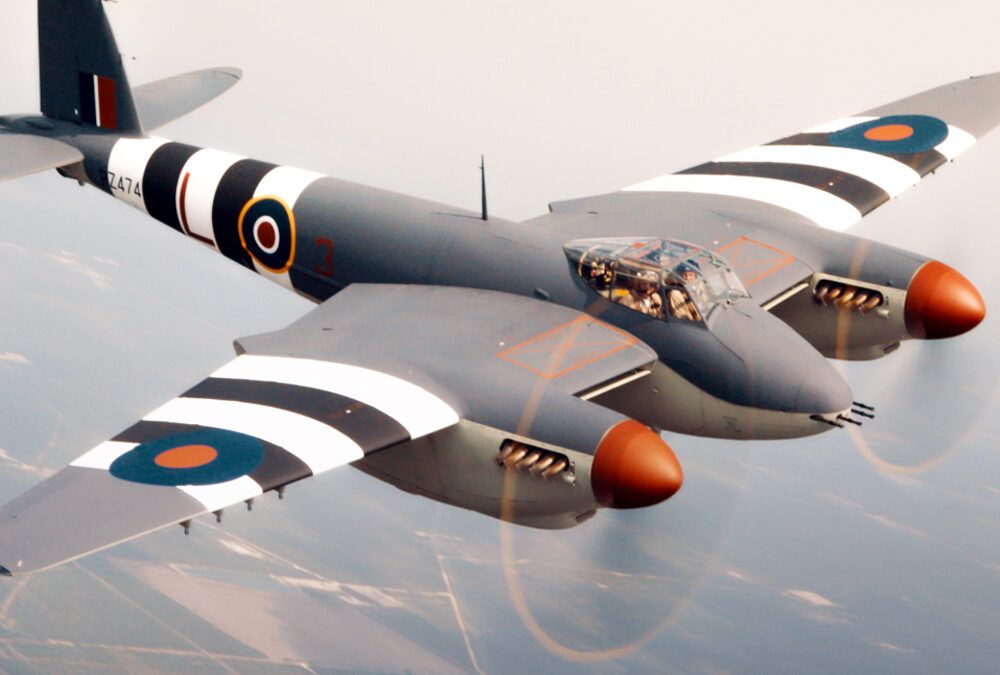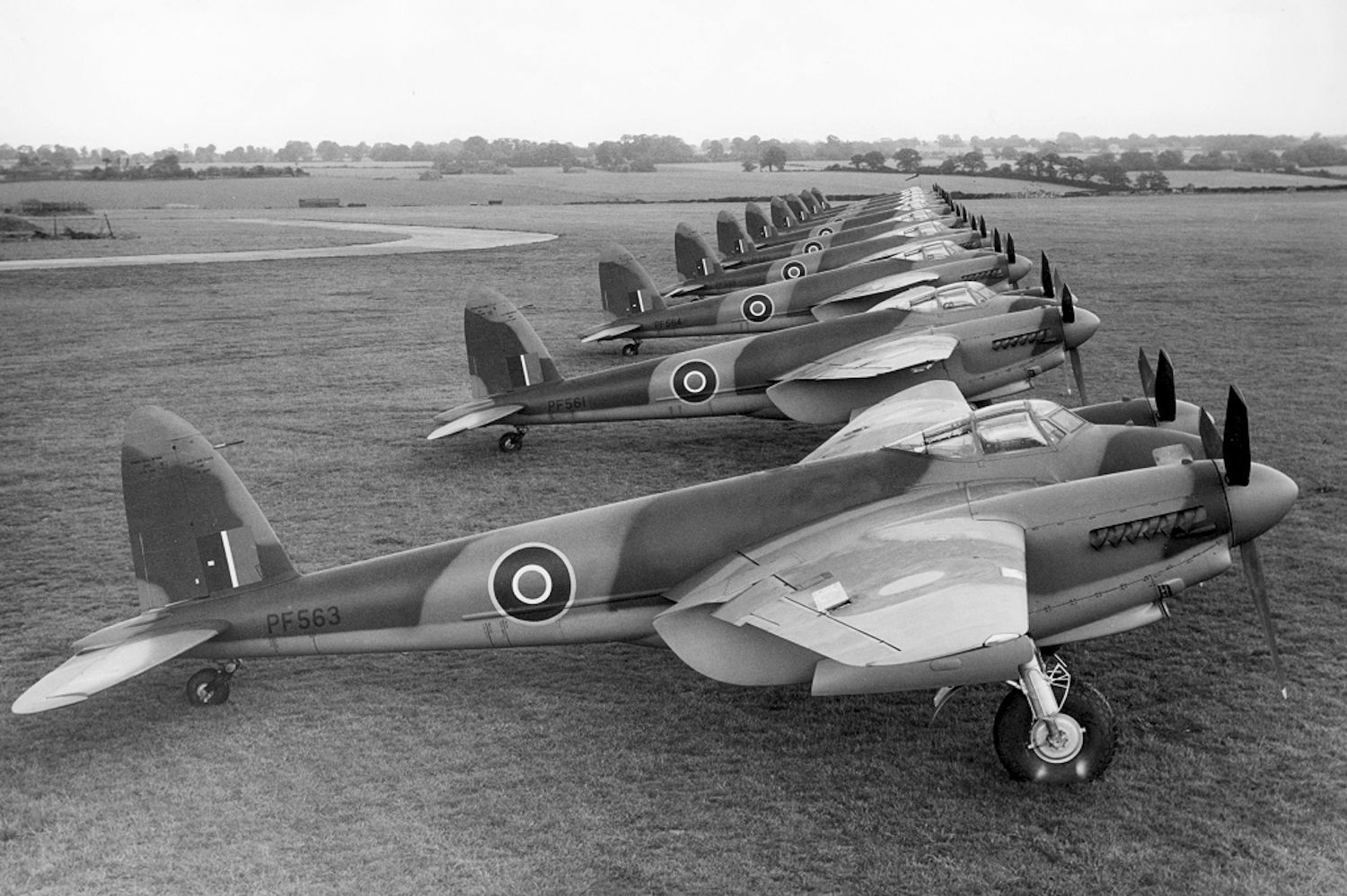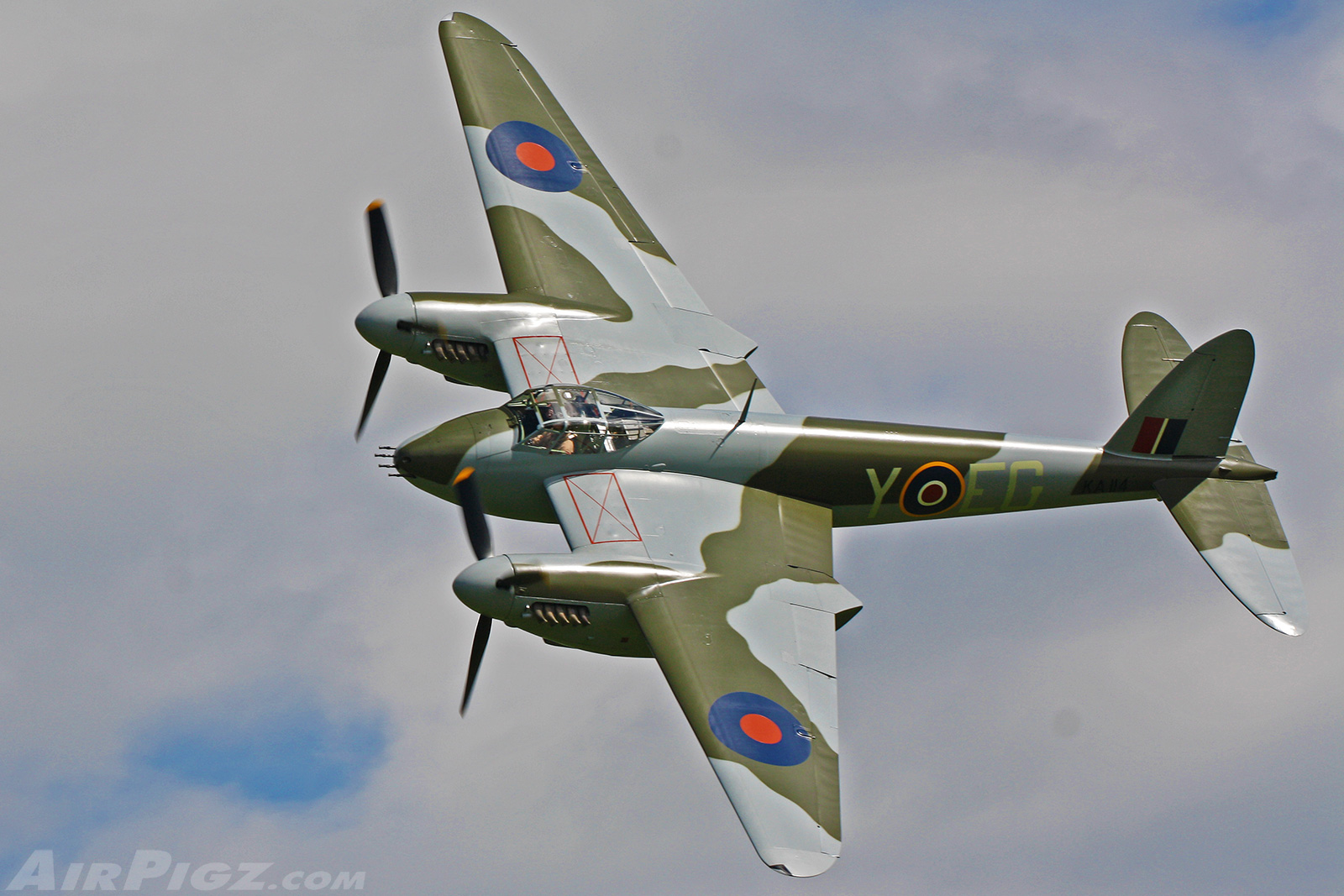De Havilland Mosquito Bomber Command Museum of Canada

This is a Mosquito B Mk 25 in flight on January 25, 1943. PHOTO: DND Archives, PL-14571 Image gallery Date modified: 2019-10-29 Description of the De Havilland Mosquito.
1946 de Havilland DH.98 Mosquito B.35 N35MK

The de Havilland DH.98 Mosquito is a British twin-engined, multirole combat aircraft, introduced during the Second World War. Unusual in that its airframe was constructed mostly of wood, it was nicknamed the "Wooden Wonder", [4] or "Mossie". [5]
Rare Mosquito makes Oshkosh debut — General Aviation News

Mosquito, British twin-engine two-seat mid-wing bomber aircraft that was adapted to become the prime night fighter of the Allies during World War II. The Mosquito had a frame of wood and a skin of plywood, and it was glued and screwed together in England, Canada, and Australia. The plane was designed in 1938 and entered service in 1941.
FileDe Havilland Mosquito 11.JPG Wikimedia Commons De havilland

Mosquito Dedicated Bombers The first Mosquito bomber sortie was a an armed sortie charged with photographing the aftermath of a recent 1,000-strong Allied bomber raid over Cologne following May 30th - the aircraft sent in with bombs to attack any remaining targets of opportunity. The initial Mosquito bomber version was the B.Mk IV Series 1 of which ten were converted from PR forms.
mosquitorafm2.jpg (3008×2000) De havilland mosquito, De havilland

The de Havilland Mosquito was a British light bomber that served in many roles during and after the Second World War. Mosquito-equipped squadrons performed medium bomber, reconnaissance, tactical strike, anti-submarine warfare and shipping attack and night fighter duties, both defensive and offensive. [1]
Mosquito , c1944. De havilland mosquito, Wwii aircraft, De havilland

The de Havilland Mosquito is a British two-engine multi-role combat aircraft used by the Royal Air Force and other Allied air forces during World War II. Of the 7,781 aircraft built, 30 survive today, four of which are airworthy. Eight aircraft are currently [when?] under restoration. Surviving aircraft Surviving aircraft by manufacturer
Обои RAF, Вторая Мировая Война, Ночной истребитель, Mosquito, de

Originally conceived as a high-flying, unarmed photo-reconnaissance aircraft, the Mosquito saw service in wide-ranging roles from bomber / fighter-bomber, night-fighter, anti-shipping strike, trainer, torpedo bomber and even as a target tug.
De Havilland DH98 Mosquito FB26 Untitled Aviation Photo 2532892

Planes; Crew; Weapons A versatile aircraft, the Mosquito proved a remarkable fast unarmed bomber, capable of carrying a sizeable bomb load. It proved particularly useful as a precision bomber and with the Pathfinder Force; only Lancasters dropped more target indicator bombs during the war. A Mosquito is displayed in the Memorial's Aircraft Hall.
This Marvelous Engineering Secret Turned The Mosquito Into The World's

First flight: November 15th, 1940 Official introduction: November 15th, 1941 Retired: May 1963 Since there are many variants of the Mosquito, we'll provide the specifications for the most common,.
de Havilland Mosquito Mk. 26 N114KA Location Geneseo New York July

The wooden fighter-bomber. When Sir Geoffrey de Havilland first pitched his idea for a two-seater bomber made of wood with no armament, few people were willing to accept his design. But the de Havilland Mosquito went on to become one of the most successful and popular aircraft of the Second World War. The defence of this bomber would be its speed.
Pin on Flying Machines

The de Havilland Mosquito was probably the most versatile aircraft of World War II, being used in all roles from fighter, night fighter, long-range bomber, pathfinder, to photo reconnaissance, etc.
The de Havilland Mosquito EAA Warbirds of America

The basic fighter Mosquito introduced into squadron service in 1942 was the N.F.Mk.II, equipped primarily as a night-fighter and used for home defense alongside the Bristol Beaufighter. Its armament comprised four 20 mm cannon in the front fuselage belly and four Browning .303 in. machine-guns in the extreme nose.
Innovation in Construction Mosquito Plane kdA

COCKPIT VIEW IN FLIGHT! Steve Hinton discusses flying the de Havilland Mosquito, the aircraft history, and restoration. If you are a WWII aircraft enthusias.
Mosquito Fighter Bomber Flies Again

Discover a world of convenience with our Clearance. Best sellers up to 90% off. Come and check everything at a surprisingly low price, you'd never want to miss it.
Mosquito Buzzing Its Massive RollsRoyce Engines World War Wings

The Mosquito FB Mk.VI was the fighter bomber version and packed an impressive punch of four 20 mm cannons and four 7.7 mm machine guns with two 500 lb. bombs or up to eight 60 lb. rockets. Most spectacular was the Mosquito FB Mk. XVIII, also known as the Tsetse (fly), armed with a mighty Molins 6-pounder / 57 mm cannon, capable of.
Mosquito Range, Top Speed, Variants, & Specifications Britannica

A total of 1134 Mosquitoes were built at Downsview, just north of Toronto, from 1942 to 1945. Canadian-built Mosquitoes were flown in combat in Europe and North Africa by the RCAF, Royal Air Force, and U.S. Army Air Force. Postwar, some Canadian-built Mosquitoes were flown by the Chinese Nationalist Air Force.